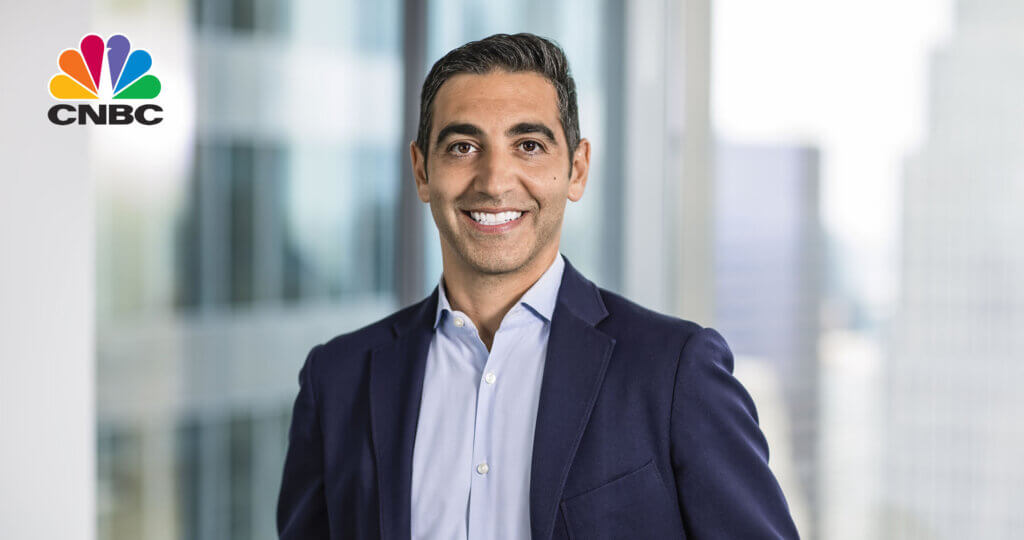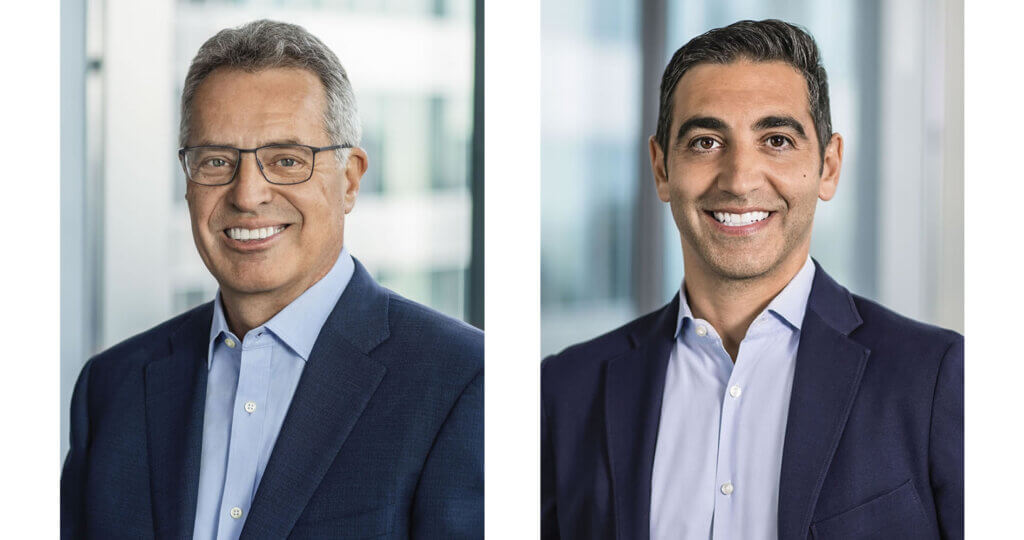All the company would have to do is raise prices 50% and the P/E ratio would fall to the low-teens.
-Analyst recommending a new stock purchase
We are nine years into an economic and stock market recovery and P/E ratios are elevated somewhat beyond historic averages. So when an experienced portfolio manager hears a young analyst make the above comment, he hears alarm bells. But instead of seeing this as a sign that the market has peaked, we purchased the stock for the Oakmark Fund. But, more on that later.
At Oakmark, we are long-term investors. We attempt to identify growing businesses that are managed to benefit their shareholders. We will purchase stock in those businesses only when priced substantially below our estimate of intrinsic value. After purchase, we patiently wait for the gap between stock price and intrinsic value to close.
For several years, the financial media has been dominated by pronouncements that the bull market is over. Throughout my career, I can’t remember a more hated bull market. Many state that a recession is “overdue” since past economic booms have almost never lasted as long as this one. But do nine years of sub-normal economic growth even constitute a recovery, much less a boom? If recessions occur to correct excesses in the economy, has this recovery even been strong enough to create any? Maybe recessions are less about duration of the recoveries they follow and more about the magnitude. If so, earnings might not even be above trend levels.
Bears will also point to the very high CAPE ratio—or the cyclically adjusted P/E. That metric averages corporate earnings over the past decade in an attempt to smooth out peaks and valleys. But remember that the past decade includes 2008 and 2009, frequently referred to as the “Great Recession” because of how unusually bad corporate earnings were. I’ll be the first to say that if you think an economic decline of that magnitude is a once-in-a-decade event, you should not own stocks today. But if it is more like a once-in-a-generation event, then that event is weighted much too heavily in the CAPE ratio. If the stock market and corporate profits maintained their current levels for the next two years—an outcome we would find disappointing—simply rolling off the Great Recession would result in a large decline in the CAPE ratio.
Higher P/E ratios are also caused by near-zero short-term interest rates because corporate cash now barely adds to the “E” in the P/E ratio. When I started in this business in the early 1980s, cash earned 8-9% after tax. Consider a simple example of a company whose only asset is $100 of cash and the market price is also $100. In the early 1980s, the $8 or $9 of interest income would generate a P/E ratio of about 12 times. Today, $100 would produce less than $1 of after-tax income, driving the P/E ratio north of 100 times. There is, of course, uncertainty as to whether that cash will eventually be returned to shareholders or invested in plants or acquisitions, but it seems that making a reasoned guess about the value of cash is more appropriate than valuing it at almost nothing.
A less obvious factor that is producing higher P/E ratios today is how accounting practices penalize certain growth investments. When a company builds a new plant, GAAP accounting spreads that cost over its useful life—often 40 years—so the cost gets expensed through 40 years of depreciation as opposed to just flowing through the current income statement.
But when Amazon hires engineers and programmers to help it prepare for sales that could double over the next four years, those costs get immediately charged to the income statement. When Facebook decides to limit the ad load on WhatsApp to allow it to quickly gain market share, the forgone revenue immediately penalizes the income statement. And when Alphabet invests venture capital in autonomous vehicles for rewards that are years and years away, the costs are expensed now and current earnings are reduced.
The media is obsessed with supposedly bubble-like valuations of the FANG stocks—Facebook, Amazon, Netflix and Google (Alphabet). The FANG companies account for over 7% of the S&P 500 and sell at a weighted average P/E of 39 times consensus 2017 earnings. In our opinion, the P/E ratio is a very poor indicator of the value of these companies. Alphabet is one of our largest holdings, and our valuation estimate is certainly not based on its search division being worth 40 times earnings. If one removed the FANG stocks from the S&P multiple calculation—not because their multiples are high, but because they misrepresent value—the market P/E would fall by nearly a full point. And, clearly, more companies than these four are affected by income statement growth spending.
In addition, no discussion of stock valuations would be complete without some consideration of opportunities available in fixed income. Many experts argue that investors should sell their stocks because the current S&P 500 P/E of 19 times is higher than the 17 times average of the past 30 years. By comparison, if we think of a long U.S. Treasury bond—say, 30 years—in P/E terms, the current yield of 2.9% results in a P/E of 34 times. The average yield on long Treasuries over the past 30 years has been 5.5%, which translates to a P/E of 18 times. Relative to the past 30 years, the long bond P/E is now 90% higher than average. We don’t think the bond market at current yields is any less risky than equities.
The point of this is not to advance a bullish case for stocks, but rather to poke holes in the argument that stocks are clearly overvalued. We aren’t market timers at Oakmark. We don’t believe we can add value by getting in and out of the market. It’s not just our shortcoming; very few, if any, investors have demonstrated that ability. So we keep our portfolios nearly fully invested in stocks that we believe are each attractively valued.
We think our investors would also fare best by limiting their in-and-out trading. We suggest establishing a personal asset allocation target based on your financial position and risk tolerance. Then limit your trading to occasionally rebalancing your portfolio to your target. If the strong market has pushed your current equity weighting above your target, by all means take advantage of this strength to reduce your exposure to stocks.
Now, back to the P/E ratio distortions caused by investing for growth. This highlights a costly decision we made six years ago. In 2011, when Netflix traded at less than $10 per share, one of our analysts recommended purchase because the price-per-subscriber for Netflix was a fraction of the price-per-subscriber for HBO. Given the similarity of the product offerings and Netflix’s rapid growth, it seemed wrong to value the company’s subscribers at less than HBO’s. But, at the time, streaming was a relatively new technology, HBO subscribers had access to a much higher programming spend than Netflix subscribers and Netflix was primarily an online Blockbuster store, providing access to a library of very old movies. Netflix had only one original show that subscribers cared about, House of Cards, and churn was huge as they would cancel the service after a month of binging on the show. Despite the attractive price-per-sub, we concluded that the future of Netflix was too uncertain to make an investment.
Today, Netflix trades at $180 per share and has more global subscribers than the entire U.S. pay-TV industry. Netflix provides its subscribers access to more than two times the content spending that HBO offers, making it very hard for HBO to ever match the Netflix value proposition. Finally, Netflix is no longer just a reseller of old movies. The company has doubled its Emmy awards for original programming in each of the past two years and now ranks as the second most awarded “network.” On valuation, Netflix is still priced similarly to the price-per-subscriber implied by AT&T’s acquisition of HBO’s parent company Time Warner, despite Netflix subscribers more than quadrupling over the past four years while HBO subscribers have grown by less than one third.
Last quarter, when our analyst began his presentation recommending Netflix, selling at more than 100 times estimated 2017 earnings, I was more skeptical than usual. His opening comment was that Netflix charges about $10 per month while HBO Now, Spotify and Sirius XM each charge about $15. “All the company would have to do is raise prices 50% and the P/E ratio would fall to the low teens,” he argued. Anecdotally, those who subscribe to several of these services tend to value their Netflix subscription much higher despite its lower cost. Quantitatively, revenue-per-hour-watched suggests Netflix is about half the cost (subscription fees plus ad revenue) of other forms of video. Netflix probably could raise its price to at least $15 without losing many of its subscribers. For those reasons, Netflix is now in the Oakmark portfolio.
So, is Netflix hurting its shareholders by underpricing its product? We don’t think so. Like many network-effect businesses, scale is a large competitive advantage for content providers. Scale creates a nearly impenetrable moat for new entrants to cross. With more subscribers than any other video service, Netflix can pay more for programming and still achieve the lowest cost-per-subscriber. As shareholders of the company, we are perfectly amenable to Netflix’s decision to forfeit current income to rapidly increase scale.
Because we are value investors, when companies like Alphabet or Netflix show up in our portfolio, it raises eyebrows. Investors and advisors alike are full of questions when investors like us buy rapidly growing companies, or when growth investors buy companies with low P/Es. Portfolio managers generally don’t like to be questioned about their investment style purity, so they often avoid owning those stocks. We believe our portfolios benefit from owning stocks in the overlapping area between growth and value. Therefore, we welcome your questions about our purchases and are happy to discuss the shortcomings of using P/E ratio alone to define value.
Thank you for your ongoing interest and investment in the Oakmark Funds.
The securities mentioned above comprise the following percentages of the Oakmark Fund’s total net assets as of 09/30/17: Amazon.com, Inc. 0%, Facebook, Inc. 0%, Alphabet, Inc., Class C 3.3%, Netflix, Inc. 1.3%, Time Warner Inc. 0%, AT&T Inc. 0% and Sirius XM Holdings Inc. 0%.
The securities mentioned above comprise the following percentages of the Oakmark Select Fund’s total net assets as 09/30/17: Amazon.com, Inc. 0%, Facebook, Inc. 0%, Alphabet, Inc., Class C 8.6%, Netflix, Inc. 0%, Time Warner Inc. 0%, AT&T Inc. 0% and Sirius XM Holdings Inc. 0%.
Portfolio holdings are subject to change without notice and are not intended as recommendations of individual stocks.
Access the full list of holdings for the Oakmark Fund as of the most recent quarter-end.
Access the full list of holdings for the Oakmark Select Fund as of the most recent quarter-end.
The Price-Earnings Ratio (“P/E”) is the most common measure of the expensiveness of a stock.
The CAPE Ratio is a cyclically adjusted price-to-earnings ratio and a valuation measure usually applied to the S&P 500 equity market. It is defined as price divided by the average of ten years of earnings (moving average), adjusted for inflation.
The S&P 500 Total Return Index is a market capitalization-weighted index of 500 large-capitalization stocks commonly used to represent the U.S. equity market. All returns reflect reinvested dividends and capital gains distributions. This index is unmanaged and investors cannot invest directly in this index.
The Oakmark Fund’s portfolio tends to be invested in a relatively small number of stocks. As a result, the appreciation or depreciation of any one security held by the Fund will have a greater impact on the Fund’s net asset value than it would if the Fund invested in a larger number of securities. Although that strategy has the potential to generate attractive returns over time, it also increases the Fund’s volatility.
Oakmark Select Fund: The stocks of medium-sized companies tend to be more volatile than those of large companies and have underperformed the stocks of small and large companies during some periods.
Because the Oakmark Select Fund is non-diversified, the performance of each holding will have a greater impact on the Fund’s total return, and may make the Fund’s returns more volatile than a more diversified fund.
The discussion of the Funds’ investments and investment strategy (including current investment themes, the portfolio managers’ research and investment process, and portfolio characteristics) represents the Funds’ investments and the views of the portfolio managers and Harris Associates L.P., the Funds’ investment adviser, at the time of this letter, and are subject to change without notice.
All information provided is as of 09/30/2017 unless otherwise specified.






